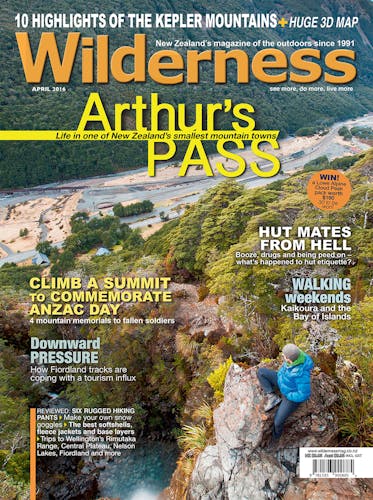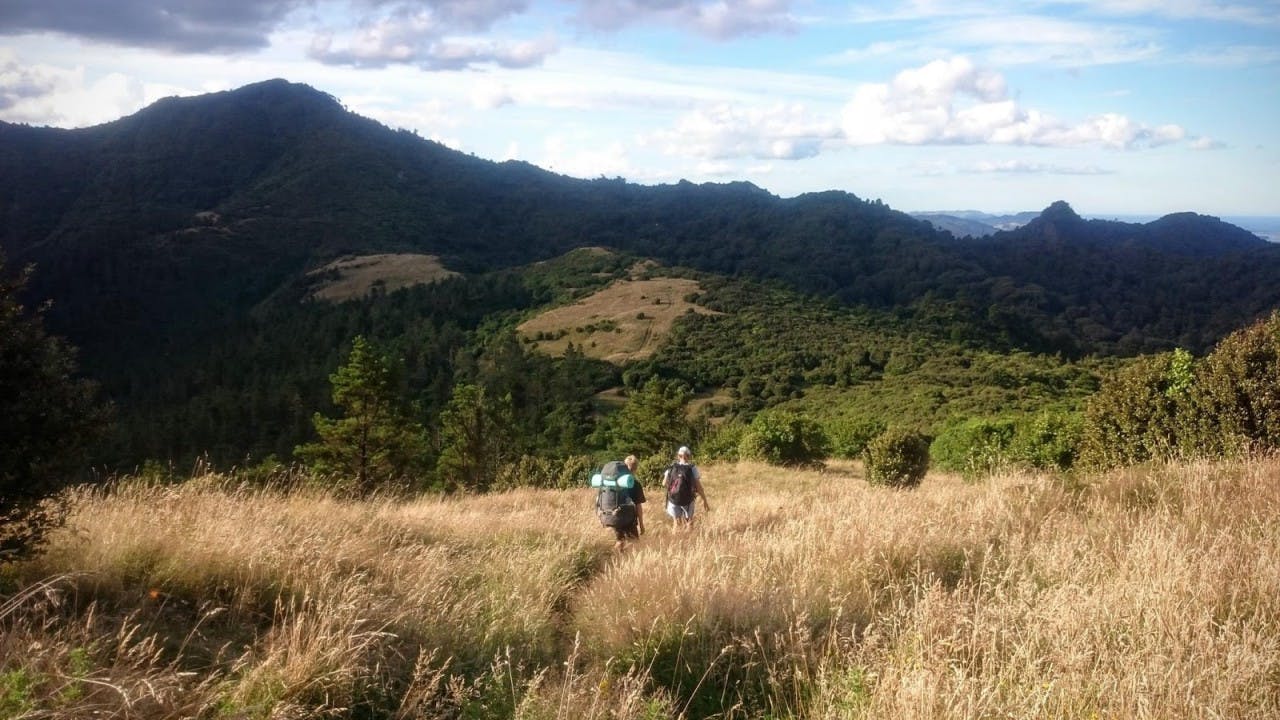Letter of the month: Snubbed no more
Like many Aucklanders, I have been guilty of snubbing the Kaimai Mamaku Forest Park in Bay of Plenty for grander things further south. That changed recently when a couple of friends and I spent a long weekend traversing the range along the North-South Track.
In true backpacker style, we used Intercity buses to avoid a long car shuttle at each end. it took us 71 hours to make our way from Lower Kaimai through to Paeroa. It was great tramping and most of the track is well marked, thanks to the volunteer hours being poured in by local clubs. One great thing about the North-South Track is the variety. Every couple of hours the nature of the bush changed completely. From lush rain forest to mamaku stands and nikau groves; scrubby bush to tall remnants of the old forest. There were old tramlines, rocky ridge lines, river crossings and everything in between (including an incredible natural waterslide).
The Kaimai Range may not have the grandeur of the South Island but it is still very interesting. The new Kaimai Ridgeway Track will be a fantastic asset for the region once it is completed.
– Heather Davidson, email
Recreate, don’t procreate
In recent issues, notably January 2016, there have been several references to children and the outdoors. I will be seen as a wet blanket for mentioning this, but one of the worst things a nature lover can do to the environment is have children. Everyone on earth, however environmentally conscious, makes some desecration of nature. We have to, just to survive. And by producing children we merely double the bad effect each parent is already making.
Most people have an instinct to have children, unfortunately. It’s in their genes. But I do ask people to resist the urge, and teach others to resist it too.
The world population is increasing by about 80 million a year. Surely readers can see the horrific effect this has on nature. Anything we can do to slow the growth would be good.
– Stephen Conn, Nelson
Ambitious Taranaki project
It was of interest to read about Project Taranaki Mounga and the NEXT Foundation’s plan to provide $24m in funding over 10 years to eradicate pests from Egmont National Park.
Big words stated. I like them, but there has been no published plan on how this is going to be implemented.
This project is a collaboration between the NEXT Foundation, DOC, local iwi and the Taranaki community, to control pests and ecological restoration partly by ridding the park of introduced weeds, shrubs and trees.
It interested me that in 2015 there is a need for such a project in Egmont National Park, as the park was formed in 1900. We’ve already had 115 years of throwing taxpayer money into the park to do exactly the same. The mandate of DOC and the Lands and Survey before it has been to make the park pest and weed free.
Another thing of interest to me was only last December I visited the Dawson Falls roadend, and right outside the DOC Visitor Centre were healthy blackberry bushes. So much for controlling invasive species.
Good luck with the project, it has been 115 years in the making.
– Ian McAlpine, New Plymouth
Other sports, please
I have been a subscriber to Wilderness since its virtual inception and over the years I have enjoyed reading it from cover to cover. Just of late I feel it has turned into purely a tramping magazine and I am starting to miss the variety of subjects we used to enjoy. Surely the term ‘Wilderness’ should encompass all sports enjoyed in the great New Zealand outdoors. Could we please have some regular articles on other sports like mountain biking, rock climbing, canyoning etc. This, I feel, would again make it into a true New Zealand outdoor magazine.
– Mike Nightingale, Hamilton
Great messy outdoors
One of my favourite places to visit is Nelson Lakes National Park and for the past six years I have returned during the summer months.
Each year I have noticed increasing numbers of trampers in the park enjoying the outdoor experience and the beauty of the area.
Unfortunately, with increasing numbers there seems to be an increasing problem with trampers not participating in the unwritten rules of ‘hut etiquette’, ‘toilet etiquette’ and rules around freedom camping.
At times, the huts have rubbish left in them, plastic in the fireplaces, the benches messy and the floor in need of a good sweep. I have seen people light a fire in a hut on a cool summer morning and make no effort to replace the firewood. I have seen toilet paper beside the trail and people camping right beside the tracks.
I have no intention of pointing the finger at any nationality because I have noticed good and bad in all trampers, but I would hope that New Zealanders would set a good example to overseas visitors.
Perhaps Wilderness could publish an article highlighting good hut and outdoor etiquette. We are so fortunate to have a hut system; we should never take these facilities for granted.
Equally, we shouldn’t take for granted our clean outdoors environment.
– Wileen Wintle, email
Hot ash disposal
It was disturbing to read that there has been yet another hut fire due to hot ashes being put under a hut (Walkshorts, March 2016). In recent years in Arthur’s Pass National Park, both Casey and Hawdon huts have burned to the ground in similar instances. DOC needs to immediately put notices in each and every hut next to the fireplaces saying ashes must be disposed of only when cold, and each hut needs a large steel barrel for ash disposal only.
The cost will be minute compared to that of replacing huts. I have suggested this repeatedly to DOC staff with no effect.
The new huts on the Old Ghost Road are stunning but lacked similar ash disposal warnings and it would be tragic to lose one of these.
– Paul Corwin, Cass







